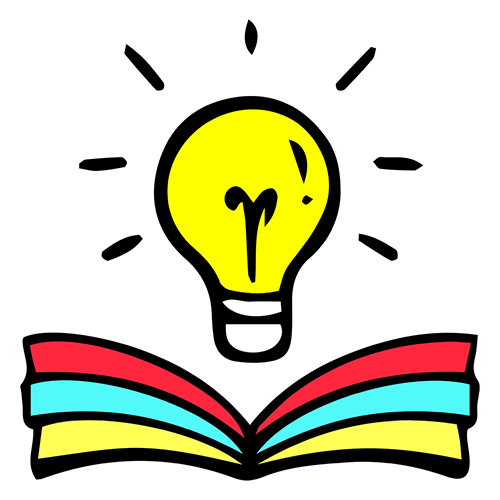Teaching math to special education students can be tough. Yet, research has shown that integrating students with diverse abilities and needs into general education math classes can have numerous benefits.
It promotes inclusivity, social interactions, and a positive student learning environment. Studies have also found that inclusive math classrooms improve academic outcomes, increase self-confidence, and greater overall success for students with disabilities.
This article will provide ideas to support math lessons for special education students in 3rd, 4th, and 5th grades.

1. Focus on the Standards
Educational standards are guidelines that describe what students should know and be able to do by the end of each grade level. Focusing on these standards is important because it ensures that all students, including those with special needs, work towards the same academic goals as their peers.
For upper elementary teachers, this means aligning lesson plans with state or common core standards and considering how to make them accessible to learners with diverse needs. This could involve breaking down complex concepts into simpler parts or providing context to make the material easier to understand.
2. Build Scaffolds to Bridge Learning
Scaffolding is a method that involves giving students temporary supports to help them reach new levels of learning that they wouldn’t be able to achieve on their own.
For special education students, this could mean using visual aids, checklists, or step-by-step guides to introduce more complex skills or concepts gradually. The goal is to slowly remove these supports as students become more skilled, promoting independence and confidence.
In practice, scaffolding might involve a teacher showing students how to do something and then guiding them through it before they try it themselves.
3. Identify Problem Areas and Plug Them
Continuous assessments are essential for pinpointing specific learning gaps or areas of difficulty for special education students. Once we identify these, we should plan targeted interventions to address these challenges.
This could mean extra tutoring, adjusted assignments, or specialized teaching strategies. For instance, if a student is having trouble with fractions, the teacher could use manipulatives or drawings to help them visualize the concept until they grasp it better.
4. Practice and Repetition
Mastering a skill often requires practice and exposure. Creating activities and exercises that let students apply new knowledge or skills in different situations is important. This allows students to develop a deeper understanding of the concept so it becomes automatic.
For upper elementary students, gamification or hands-on projects can make repetition more engaging. The idea is to reinforce learning and build fluency so concepts or skills become second nature. This step is particularly beneficial for special education students needing more time to consolidate their understanding.
5. Continuous Progress Monitoring and Feedback
It’s crucial to frequently assess the progress of special education students, not just academically but in other areas, too. Using formative assessments helps us monitor understanding and provide immediate feedback.
And, of course, frequent conversations with students about their progress make them feel good about what they’ve achieved and help them through the challenges they might face. It’s all about making sure they know their efforts are valued and recognized.

Knowledge Empowers Students
Teaching special education math calls for a careful and personalized approach. Using the above ideas, educators will create a welcoming learning environment where special education students master grade-level content.
We empower students by identifying their specific needs, engaging them with enjoyable practice, and supporting their growth. Remember, a positive and fun math experience is key to every student’s success.
Next Steps –
If you’re ready to jump in and empower your students with ready-to-go resources created with diverse learners in mind, be sure to check out my Teachers Pay Teachers shop. It’s filled with differentiated teaching resources to make math a bit easier to teach and learn.
Articles about Multi-Digit Multiplication:
- 3 Ideas for Teaching Multi-Digit Multiplication – Here are 3 FAST ideas for teaching multi-digit multiplication. These interventions are easy and quick for busy teachers.
- 2-Digit Multiplication Worksheets: Differentiated – Here’s a visual method for teaching 2-digit multiplication using differentiated visual cues to guide students’ learning for success.
- 2-Digit Multiplication Made Easier! – Here’s how to use the double-digit multiplication organizers and worksheets.
Articles about Long Division:
- Differentiated Long Division Worksheets for FREE – Grab these differentiated long division worksheets for FREE and dramatically boost student success and your teaching success!
- Graph Paper Math Intervention – This blog article explains how to use graph paper as a quick and easy intervention resource with your students. In addition, it includes links to free printable graph paper and ideas about how to use it in your classroom.
Differentiated Multiplication Resources:
- 2 Digit Multiplication Worksheets and Organizers Set – This new double-digit multiplication method uses colors and shapes to provide a visual, concrete strategy for teaching 2-digit multiplication.
- 2-Digit Multiplication and 3-Digit Multiplication Worksheets and Organizers – This multi-digit (3-digit x 2-digit) multiplication method uses colors and shapes for a visual, concrete strategy.
- Multiplication 2-Digit x 1-Digit and 3-Digit x 1-Digit Worksheets and Organizers – This set includes 2-digit x 1-digit and 3-digit x 1-digit multiplication with these worksheets and organizers.
- 3-Digit and 4-Digit Multiplication Worksheets and Organizers – This multi-digit (3-digit x 3-digit and 4-digit x 3-digit) multiplication method uses colors and shapes for a visual, concrete strategy.
- All Multiplication Resources – Check out all the multiplication resources I offer in my Teachers Pay Teachers store.
Differentiated Long Division Resources:
- Long Division Differentiated Worksheets and Organizers – Visit Teachers Pay Teachers to see the complete set of organizers and worksheets included in the original kit.
- All Division Resources – Check out ALL the multiplication resources I offer in my Teachers Pay Teachers store.
- 2-Digit Divisors Long Division Differentiated Worksheets and Organizers – When you get ready to move on to 2-digit divisors, this is the perfect resource for promoting advanced long division learning with your students.
- 2 Digit Multiplication Worksheets and Organizers – Differentiated Resource – Visit Teachers Pay Teachers to see the complete set of organizers and worksheets included in this original kit.
Please follow me at my Teachers Pay Teachers Store, Pinterest, and Facebook if you found this article useful! I’d LOVE to hear from you!











